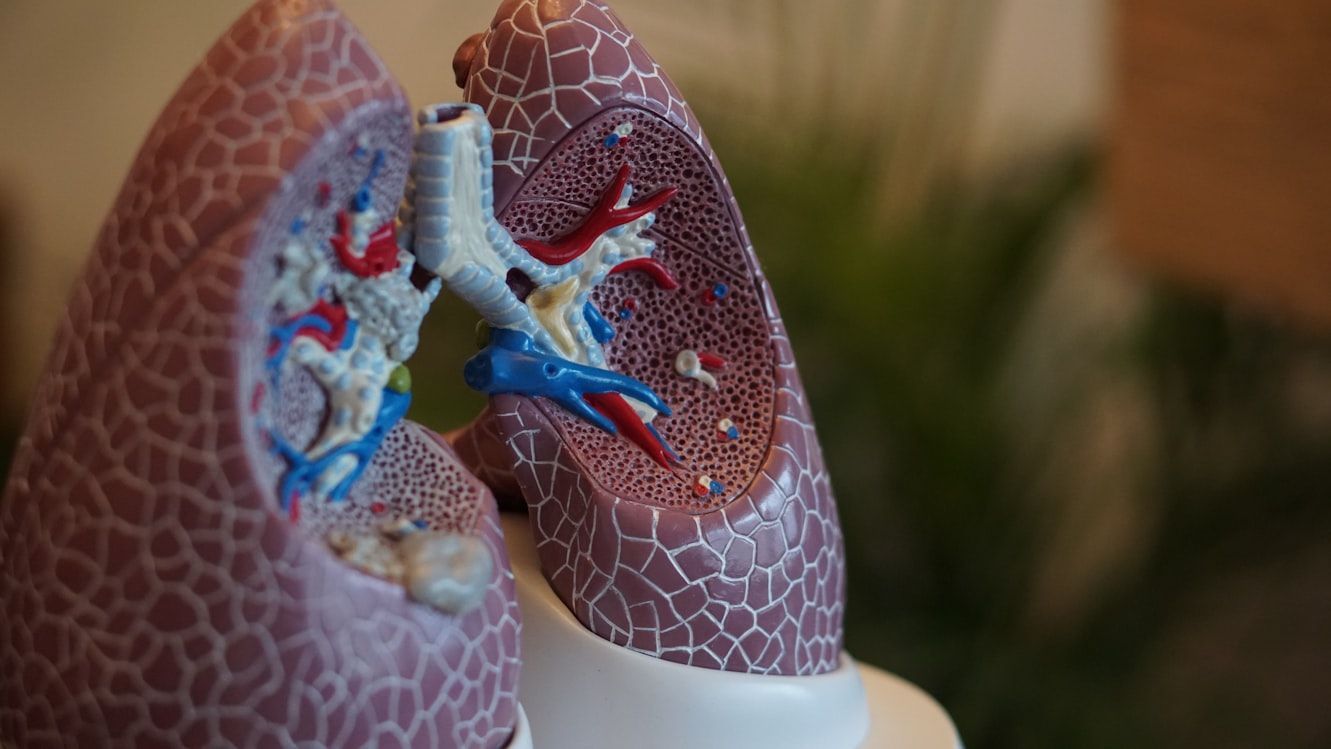Where science meets fun
Can you guess these common diseases from their scientific names?
Published on August 29, 2025
 Credit: Andrea Piacquadio
Credit: Andrea Piacquadio
Do you know your conjunctivitis from your pharyngitis? How about your hyperhidrosis from your hyperlipidaemia? If not, this game is for you! Join us for an article-quiz that will help you learn the official scientific names of common health conditions. While you're at it, treat yourself with a full-body scan on causes, symptoms, and treatments!
Scientific term #1: Hyperhidrosis
 Credit: Pixabay
Credit: Pixabay
This medical condition has to do with a bodily secretion we all produce. However, some people do it excessively, often as an abnormal response to stressful situations, overstrain, or environmental heat.
Still a bit lost? Let's see if the etymology of the word helps a little. Hyperhidrosis comes from the Greek. It combines the prefix hyper, meaning "excessive" or "above normal", with hidrosis, a word that derives from "water".
Scientific term #2: Conjunctivitis
 Credit: David Matos
Credit: David Matos
Conjunctivitis is a condition that affects a part of the face and can be caused by either a bacterial or viral infection or by seasonal allergies.
It is usually very annoying and contagious, and to treat it, you should consult a specialist. Conjunctivitis comes from the Latin word conjunctiva, referring to a certain mucous membrane, and -itis, meaning "inflammation." How close are you?
Scientific term #3: Pharyngitis
 Credit: Tara Winstead
Credit: Tara Winstead
This disease affects an internal region of your upper body. It is usually triggered by an infection, although it can also be caused by irritants such as smoke, pollution, and dry air.
Pharyngitis is usually very painful and uncomfortable, especially when accompanied by fever and other symptoms. Any idea what the colloquial name for this condition is?
Scientific term #4: Tussis
 Credit: Robina Weermeijer
Credit: Robina Weermeijer
The Latin word tussis is mainly used in medical or scientific contexts to refer to a very common condition that we have all experienced at one time or another. Generally, it is a symptom that warns of a major illness, probably related to the respiratory tract.
Need another hint? The term tussis derives from the Proto-Indo-European root tud-ti-s, meaning "to push, hit."
Scientific term #5: Pyrexia
 Credit: Tara Winstead
Credit: Tara Winstead
Pyrexia is a very common symptom you have experienced more than once throughout your life. It is a body response to infections or other causes, such as side effects of specific treatments or vaccinations.
It usually causes weakness, nausea, headaches, and muscle pain. Do you know what we're talking about? Scroll down to find out the answer!
Scientific term #6: Hyperlipidaemia
 Credit: jesse orrico
Credit: jesse orrico
Hyperlipidaemia is a medical condition characterized by the presence of elevated levels of lipids in the blood. Excess of these fats can increase the risk of heart disease, stroke, and other vascular conditions.
The term hyperlipidaemia derives from the Greek and literally means "excessive fat in the blood." This disease can affect people of all ages, but is most commonly found in people over 40. It is generally caused by lifestyle factors, such as overweight, lack of exercise, unhealthy diet, genetics, and certain diseases. We bet you already figured it out!
Common Condition #1: Excessive sweating
 Credit: Ron Lach
Credit: Ron Lach
Did you guess it? This one was easy! Hyperhidrosis is the scientific term for excessive sweating, a condition that, as its common name indicates, produces heavy perspiration as a result of an increase in the secretion of the sweat glands.
Hyperhidrosis affects about 1% of the population —almost half of the cases are hereditary— and can lead to bad odor and bacterial skin infections. The initial treatment of excessive sweating is topical. In other, more extreme cases, other oral drugs might be used, and patients can even receive Botox injections to treat certain affected areas.
Common Condition #2: Pink eye
 Credit: Matt Kirk
Credit: Matt Kirk
Yes, we are all more familiar with this condition’s colloquial term: pink eye. Conjunctivitis is an irritation or inflammation of the membrane covering the white part of the eyeball, causing the eye to turn reddish or pink —hence the common name!
Most conjunctivitis are mild, only on rare occasions they cause more significant damage. Symptoms include itching, watery eyes, secretions, and crusting around the eyes. It is usually treated with antiallergic medication or antibacterial eye drops.
Common Condition #3: Sore throat
 Credit: cottonbro studio
Credit: cottonbro studio
Pharyngitis, or as it is more commonly known, sore throat, is an inflammation of the pharynx, the region between the nose and the larynx. It is an infection caused by viruses or bacteria, and in many cases, begins with a painful enlargement of the neck lymph nodes that makes swallowing difficult.
Regardless of the cause, the patient must stay hydrated. In addition, a sore throat is usually treated with non-steroidal anti-inflammatory drugs. In some severe cases, it may be necessary to use steroids, especially to treat pain and inflammation.
Common Condition #4: Cough
 Credit: Towfiqu barbhuiya
Credit: Towfiqu barbhuiya
How did you do with this one? Have you heard the word tussis before? Tussis is Latin for "cough." Coughing is the body's way of responding when something irritates the throat or airways. An occasional cough is normal and healthy. However, a cough that persists for several weeks may indicate an underlying illness that needs medical attention.
Tussis can be acute or chronic: Acute coughs usually begin suddenly and are often due to a cold, flu, or sinus infection. In most cases, coughs are treated with over-the-counter medicine. Doctors also recommend drinking plenty of fluids, using a humidifier, and, in cases of dry coughs, taking throat lozenges.
Common Condition #5: Fever
 Credit: Polina Tankilevitch
Credit: Polina Tankilevitch
Pyrexia is the scientific term for the common fever. Fever is basically a temporary increase in body temperature. It is not a disease per se, but a defense mechanism of the body against certain external agents, such as bacterial or viral infections.
Fever can cause joint pain, drowsiness, chills, and even delirium. Treatment includes acetaminophen and non-steroidal anti-inflammatory drugs, such as ibuprofen. In some cases, especially in young children or elderly people, a high fever can be dangerous, so it is very important to consult a physician as soon as possible.
Common Condition #6: High cholesterol
 Credit: Nataliya Vaitkevich
Credit: Nataliya Vaitkevich
Were you right? Hyperlipidaemia is, in simpler words, high cholesterol. Cholesterol is a lipid, a fat-like substance found in every cell. Our body needs some cholesterol to make hormones, vitamins, and substances that help us digest food. However, too much cholesterol in the blood can lead to coronary diseases.
The presence of high cholesterol levels can have different causes, but they are mainly linked to lifestyle. A recent study found that 1 in 10 of US adults have high total cholesterol. In addition to specific medications, healthy eating and regular physical activity have shown to significantly lower high cholesterol levels.












